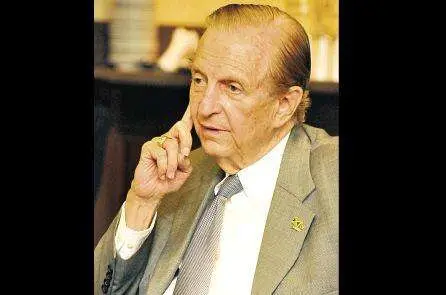
Spanish Town tourism attractions set for January rollout
A Spanish Town heritage tourism development project, for which $64 million is being provided by the Urban Development Corporation (UDC) in the first phase, is set to begin on January 31, 2014.
This rejuvenation initiative for the ‘old capital’ involves a number of stakeholders, including Mayor of Spanish Town Norman Scott, the UDC, and the Tourism Product Development Company (TPDCo).
“By the end of January, a new Spanish Town will emerge. I am here to encourage you that come the 31st of January, we will see a new Spanish Town emerging,” chairman of the Heritage Tourism Development Committee, Dennis Robotham insisted, as he addressed the third in a series of town meetings to sensitise communities, along Rivoli Avenue last week.
He also promised that his committee is putting together an attractive package for which the education minister has given the assurance that schools will be involved.
“You will begin to see horse and buggies taking tourists across the town. There will be job opportunities for tour guides. This means that income will be coming in,” Robotham added.
He also appealed to citizens to play their role in the eradication of crime and violence.
“Your part of the job is that crime and violence will have to stop. And we are asking the communities to be part (of the healing process) to stop it.”
The main historical landmarks that tourists will be visiting, include the old iron bridge at the eastern entrance to the town, the St James Cathedral, Emancipation Square, and the People’s Museum.
There are also plans to repair the fountain in the square and to restore the old courthouse and transform it into a town hall. An entertainment programme featuring schools performing traditional and indigenous cultural items as well as popular musical forms in the square, is also a work in progress.
Commercial Services Manager of the St Catherine Parish Council Ferdinand Page, emphasised the economic gains to be made from this intended rebirth of the ancient capital of Jamaica, but was quick to add that it has to be done in an organised way with support from the citizens.
“This project is to create business opportunities for shops, restaurants, hairdressers etc. But we have to change (the culture) of how we park (vehicles) and the way we do vending,” he said.
The initiative for the redevelopment of Spanish Town’s tourism potential has been long in coming. In December 1983, former Prime Minister Edward Seaga, at a function to commemorate the 450th anniversary of Spanish Town, highlighted its tourism potential.
“History is a saleable commodity,” he said. “People spend thousands of dollars every year to see the pyramids of Egypt and Mexico, the Coliseum at Rome in Italy, the Tomb of Napoleon in France, the home of George Washington in the United States, and the changing of the Guard at Buckingham Palace in the United Kingdom.
“By the exercise of love and imagination, we too can maximise the significant things of our heritage, and the world will begin to take us at our word, and come, not only to bathe and sun, but to see what it is that has shaped us. Spanish Town is a case in point. A still wasted asset,” Seaga said 30 years ago.
He said at the time that the town square has seen a lot of colourful activities since it was built over four centuries ago.
“But the vast majority of people who walk or drive through it every day, or who work in this square, seem almost oblivious of the rich heritage it represents,” Seaga said.
Spanish Town, with its decaying, collapsing centuries-old buildings, as a centre of the country’s civilisation, predates the Spanish establishment of Villa De La Vega (Town on the Plain) in 1534, as the Taino inhabited the area on the bank of the Rio Cobre, long before the arrival of the Europeans.
Earlier this year, Member of Parliament for Central St Catherine Olivia ‘Babsy’ Grange called on the Government to resurrect the Spanish Town Redevelopment Company (SPARCOM).
According to an article carried in the Jamaica Observer on July 1, 2013, Grange argued that re-establishing SPARCOM would help to stem the dereliction and improve the physical condition of the former capital and its environs.
She said that it also has implications for the town’s economic viability.
























